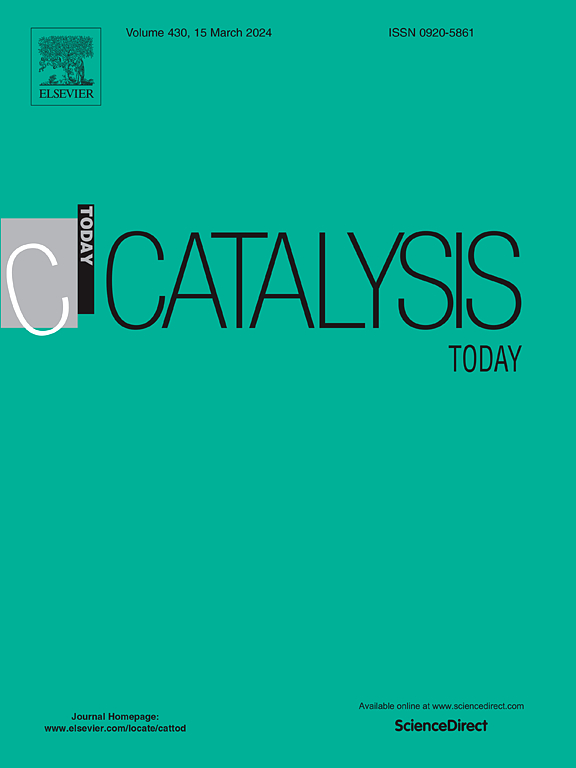Tailoring the electronic properties of TiO2 monolayers for solar driven catalysis through transition metal doping
IF 5.2
2区 化学
Q1 CHEMISTRY, APPLIED
引用次数: 0
Abstract
Substitutional doping with transition metals is carried out in the Lepidocrocite phase - the stable monolayer geometry of TiO2 - using density functional theory (DFT) methods. The doping is carried out at the differently coordinated O atom cites, producing Janus monolayer geometries. Our results indicate that key fundamental properties for photocatalysis can be tuned via doping. Monolayers doped with Ag, Au, Pd and Pt are thermodynamically stable, among all considered doping possibilities, as evident from phonon band structure calculations. Electronic structure of the Janus monolayers alters significantly, compared to pristine TiO2, owing to the emergence of mid-gap states. Reduced band gap arises from upward shift of the valence band, suggesting enhanced visible-light response. Dopant atoms also introduce excess electrons in TiO2 monolayers, which are found to localize at a single Ti site. This induces ferromagnetism in the doped monolayers. Furthermore, charge separation between TiO2 and noble metal dopants is observed which is a key parameter in influencing the selectivity and activity of photocatalytic materials. Compared to the pristine TiO2 monolayer, the Janus structure can promote water adsorption, and the Janus monolayers exhibit significantly improved activity in the hydrogen evolution reaction. These findings suggest that engineering a novel Janus TiO2-based monolayer with a noble metal layer on the other surface can offer a potential approach to improve photocatalytic performance over pristine TiO2.
求助全文
约1分钟内获得全文
求助全文
来源期刊

Catalysis Today
化学-工程:化工
CiteScore
11.50
自引率
3.80%
发文量
573
审稿时长
2.9 months
期刊介绍:
Catalysis Today focuses on the rapid publication of original invited papers devoted to currently important topics in catalysis and related subjects. The journal only publishes special issues (Proposing a Catalysis Today Special Issue), each of which is supervised by Guest Editors who recruit individual papers and oversee the peer review process. Catalysis Today offers researchers in the field of catalysis in-depth overviews of topical issues.
Both fundamental and applied aspects of catalysis are covered. Subjects such as catalysis of immobilized organometallic and biocatalytic systems are welcome. Subjects related to catalysis such as experimental techniques, adsorption, process technology, synthesis, in situ characterization, computational, theoretical modeling, imaging and others are included if there is a clear relationship to catalysis.
 求助内容:
求助内容: 应助结果提醒方式:
应助结果提醒方式:


